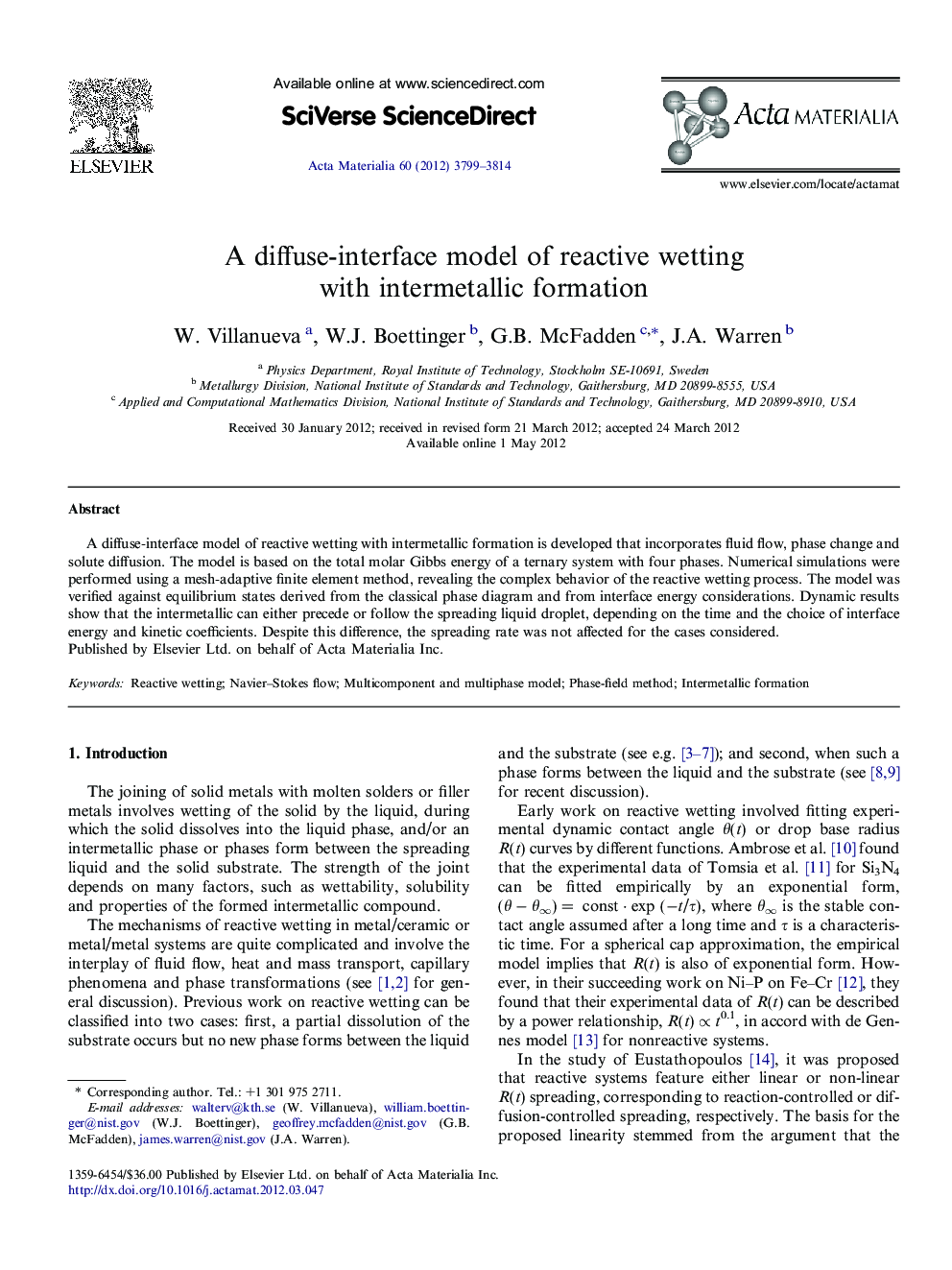| Article ID | Journal | Published Year | Pages | File Type |
|---|---|---|---|---|
| 1446734 | Acta Materialia | 2012 | 16 Pages |
A diffuse-interface model of reactive wetting with intermetallic formation is developed that incorporates fluid flow, phase change and solute diffusion. The model is based on the total molar Gibbs energy of a ternary system with four phases. Numerical simulations were performed using a mesh-adaptive finite element method, revealing the complex behavior of the reactive wetting process. The model was verified against equilibrium states derived from the classical phase diagram and from interface energy considerations. Dynamic results show that the intermetallic can either precede or follow the spreading liquid droplet, depending on the time and the choice of interface energy and kinetic coefficients. Despite this difference, the spreading rate was not affected for the cases considered.
